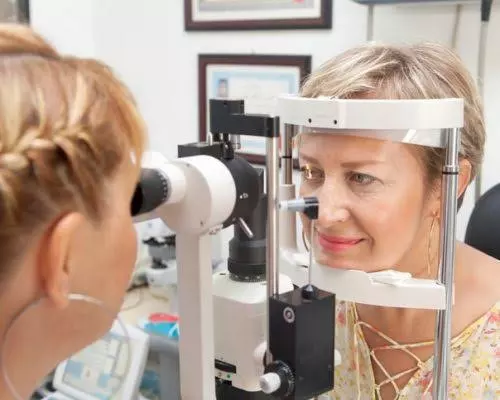If someone is suffering from diabetes then the risk of developing serious eye diseases such as diabetic retinopathy, glaucoma, and cataracts, increase. In any case, there are number of ways to lower this chances. Following are a collections of simple and effective tips to protect diabetic eye diseases.
How Does Diabetes Cause Vision Loss?
The blood vessels of the retina can be damaged by poorly controlled diabetes, the important part of your eye that transfer light into electrical signals that allow us to see. These damaged blood vessels can lead to swelling of the macula, the central part of your retina that allows us to see detail.
Diabetic retinal damage can also cause bleeding in the eye, scarring, high eye pressure and even retinal detachment. Diabetic retinopathy is a main cause of irreversible blindness.
Tips To Prevent Diabetic Eye Diseases
Diabetes eye problems can be prevented if the patient’s blood sugar levels are kept within a specific range. Diabetic retinopathy occurs when blood vessels in the retina are damaged due to persistently high blood sugar levels. Medication, food, exercise, and frequent monitoring of blood sugar levels are all part of diabetes management, so it’s important to follow your doctor’s orders.
Keep Blood Pressure and Cholesterol in Check: Diabetic eye complications might worsen with high blood pressure and cholesterol. Keep your cholesterol and blood pressure in a healthy range by making lifestyle changes, taking medication as directed, and seeing your doctor often.
Get Your Eyes Checked Regularly: Diabetic eye disorders can be more easily treated if caught early, which is why regular eye exams are so important. Comprehensive dilated eye exams should be scheduled annually, or more frequently if advised by an eye doctor, for those with diabetes. These screenings can catch eye problems including diabetic retinopathy and diabetic macular edema in their early stages before they lead to permanent blindness.
Give up the cigarette! Secondhand smoke worsens preexisting eye problems and raises the risk of diabetic eye disease. One way to lower this risk and enhance eye health generally is to quit smoking.
Get Your Eyes Checked

One of the best method to lower the risk of diabetic eye disease is to get your eyes checked at least every year or when needed. However, in early stages, diabetic eye diseases like diabetic retinopathy, glaucoma, and cataracts can’t show any symptoms.
Preventing diabetic eye problems and improving general health are both aided by leading an active, healthy lifestyle. Incorporate plenty of fresh produce, whole grains, lean meats, and healthy fats into your diet regularly. Walking, swimming, or riding a bike daily can help improve circulation and lower the risk of eye problems.
Wearing sunglasses outside is a great way to shield your eyes from potentially dangerous UV rays and injuries. Also, make sure to use protective eyewear if you work in places where eye injuries can happen.
Carefully adhere to your healthcare provider’s prescribed medication and treatment regimens if you have been diagnosed with diabetic retinopathy, diabetic macular edema, or any other diabetic eye illness. Medication, laser treatment, or other therapies may be necessary to control the disease and stop additional vision loss.
An ophthalmologist can perform some diagnostic procedures which can detect the early sign that are seamless with our naked eye. Retina and optic nerve are seriously damaged by diabetes as compared to other eye parts of the eye.
Exercise Regularly
Regular exercise is one of the most efficient method to control your blood glucose level and lower the risk of eye complications associated with health-related problems. Physical exercises improved blood circulation in important organs including the eye and also maintain your blood sugar and cholesterol at healthy levels.
Do light to moderate-intensity exercises like jogging, running, walking, and cycling. Making healthy choices such as avoiding elevator and walking the stairs will increase your overall health and also manage your diabetes.
Eat A Healthy And Balanced Diet
Healthier your diet, the lower your risk of diabetes-related eye problems. As part of managing your diabetes and lowering your diabetic eye disease risk, add wholesome and organic food items in your diet. Avoid large consumption of real meat. Ensure to overcome junk food because they contain high levels of artificial sugar and trans fat. Start drinking fresh fruit juices and avoid soft or acidic drinks with water.
Quit Smoking
If are smoking regularly with diabetes then you stand at a higher risk of developing diabetic retinopathy, cataract, and glaucoma. Smoking impairs insulin absorption which, in turn, causes spikes in blood sugar level, worsening your diabetes. It is compulsory to leave smoking when it comes to reducing the chances of diabetic eye diseases. If you are not able or powerless to quit smoking then professional help could be useful for you.
Control Your Blood Sugar
High blood sugar can affect the shape of your eye’s lens, causing blurry vision, which goes back to normal after your blood sugar stabilizes. Eye blood vessels can also be damaged with High blood sugar. Maintaining good control of your blood sugar helps prevent these problems. If you have a vision problem then visit an ophthalmologist right now.
Read more articles related to eye diseases on lustereyes.com.
Leave a Comment